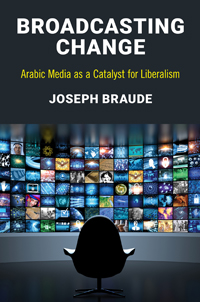by Joseph Braude –
A three-minute video, posted by a Saudi government-backed organization to YouTube on June 4, has garnered 150,000 views in 48 hours and sparked a discussion in the kingdom about how to stem sectarian conflict. In “The Hidden Killer,” a voice speaking Saudi-inflected Arabic asks the viewer to guess the identity of a force “worse than disease, natural disasters, and famine” which kills not only innocents by the hundreds of thousands but also entire states. (Spoiler alert: The hidden killer might be you, unless you learn to accept difference and get along with others.) The narration intensifies over a sequence of animated watercolor images and a lean, crescendoing soundtrack. Here’s the clip, subtitled into English:
The King Abdulaziz Center for National Dialogue, which commissioned the video, was established in 2003 in the wake of the September 11 tragedy and a subsequent series of Qaeda-linked terror attacks in Riyadh which claimed more than 40 lives. It aimed to offer a platform to “debate reform and suggest remedies” for the terror indoctrination which had precipitated the attacks, and mitigate sexism and sectarian incitement through dialogue. As is often the case with such efforts, the impact is hard to gauge. But last month’s suicide bombings of two Shi’ite mosques in the kingdom’s Eastern Province, for which the Islamic State claimed responsibility, have thrown the enduring problem into stark relief.
The kingdom, now in the midst of a multi-front war on an Iranian proxy in Yemen and Islamic State enclaves in nearby Iraq, Syria, and elsewhere, has launched a variety of initiatives to try to dissuade Saudi youth from joining jihadist groups — or attacking members of the country’s Shi’ite minority out of anger at the Tehran regime. In the program Humumna, airing weekly on Saudi public television, clerics as well as Saudi nationals who have returned disillusioned from the civil wars in Syria and Iraq come together to denounce the organizations. They argue in substance that the groups are not as advertised — calling them out as hypocrites, contrivances of foreign intelligence organizations, or well-intentioned young people ill equipped to fight the likes of Bashar al-Assad. Here is a clip from the program:
These arguments do not amount to a repudiation of the underlying Salafi jihadist ideology which informs the tenets of ISIS. However, focus group studies by the Saudi interior ministry indicate that the program is effective in reaching that subset of the population that already embraces Salafi jihadism and is at the point of taking up arms.
“The Hidden Killer” adopts a different approach. Speaking to the broader, cosmopolitan sensibility of Saudi youth in big cities like Riyadh and Jeddah, it warns of the thin dividing line between people who harbor hatred and people who act on it. When the narrator says, “[The hidden killer] could be your dearest friend,” the screen shows a young man in a living room with a baseball cap on backwards — not a bearded seminary student but a “home boy,” influenced by the pop culture of the global village. “You think you’re innocent?” the voice asks. “Think again. Go over your convictions and ideas. Think back to the grudges you bear. Lots of people like you thought they were innocent — but they transformed into wild animals … the moment [they] gave up on the value of coexistence.”
The sponsors of the video say it speaks “in a manner consistent with the language of the times we live in … [using] clever and indirect messages.” Toward the end of the clip, a door opens to a colorful living room and the sound of a baby crying: “[W]hen you enter your home and are among your family, always ask yourself, is a dispute worth losing all of this?” For an audience long exposed to clerics exhorting Muslims to “love death more than life,” the rhetorical question serves to repudiate that ugly trope and affirm the value of life.
The United States government has attempted to create its own anti-jihadist clips.
This recent Washington Post video short profiles the State Department division responsible for the effort and the product they have to show for it. “Welcome to ISIS-Land” uses sarcasm and gruesome images to show that the Islamic State commits senseless acts of violence. At best, it is a crass version of the case against ISIS one finds more methodically expressed on Humumna — that is, not an assault on the underlying ideology but rather on the failure of the organization to live up to it. The video neither challenges young people to think about their biases nor appeals to their better instincts. Ironically, it is the Saudi “Hidden Killer” clip that comes closer to channeling American family values. And that’s a good sign. After all: everyone agrees that indigenous actors should be doing the lion’s share to counter the region’s radicals, and the Saudi video shows how much more effective a homegrown effort can be. But given that Americans do invest in public communication in Arabic — as they should — it behooves Washington to deliver a more sophisticated message than it has thus far.
This post by Joseph Braude first appeared as an E-Note from the Foreign Policy Research Institute.

Speak Your Mind